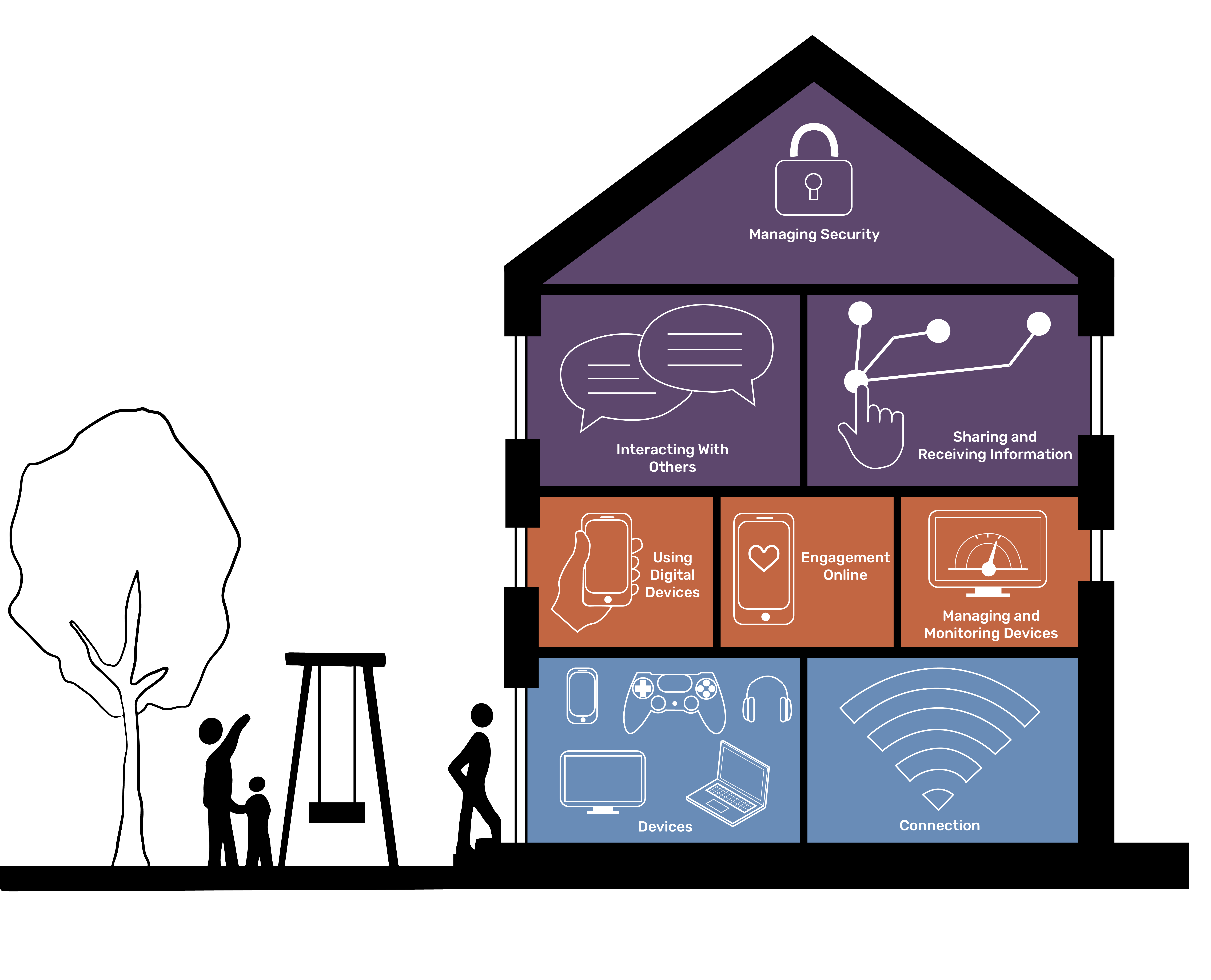A living standard for a digital age
Dr. Emma Stone explains why we need a ‘north star’ for digital inclusion – a nationally agreed benchmark – and why the Minimum Digital Living Standard is a big step forward
Today, Digital Inclusion Alliance Wales (a cross-sector group, which we’re proud to be a part) launches the 2nd edition of our agenda for digital inclusion: From Inclusion to Resilience.
Meanwhile, in the House of Lords, the Communications and Digital Committee continues its timely evidence sessions on ‘Digital exclusion and the cost of living crisis’. (Here’s a catch-up link to one of last week’s sessions featuring our Group CEO, Helen Milner).
A key idea which has been gaining traction across these is work underway to develop the Minimum Digital Living Standard or MDLS.
We live in a digital age, yet the measures we use for living standards lag behind our times.
We urgently need to update how we conceptualise ‘living standards’ to fit today’s realities, and to do so in a way that can flex for tomorrow as technological change continues at pace.
We need a ‘north star’ for digital inclusion – a nationally agreed benchmark which covers the range of essential goods, services, and skills needed for everyday life. The Minimum Digital Living Standard is a big step forward.
So, what is the Minimum Digital Living Standard?
The Minimum Digital Living Standard (MDLS) defines what a household needs to be digitally included, and what is in the ‘basket’ of essential goods, services, and skills to meet needs.
It is a citizen-led, bottom-up definition. MDLS is defined by members of the public with a range of backgrounds and capabilities. Every item on the list of digital goods, services, and skills was carefully deliberated through a series of focus groups with distinct stages. New people were professionally recruited at each stage to arrive at a robust consensus.
A minimum digital standard of living includes, but is more than having accessible internet, adequate equipment, and the skills, knowledge and support people need. It is about being able to communicate, connect and engage with opportunities safely and with confidence.
It is also a household-focused definition – thinking about digital inclusion from the perspective of different household types, building on the well-established Minimum Income Standard. As this has never been done before, the MDLS starting point is a household with children.

The table of contents lists the goods, services, and skills identified as essential for a household with children today – as the proof-of-concept household type. You’ll find the table in all the summary reports available via our website.
None of this is about telling people what they should have. Instead, this is about listening to people about what households need – recognising that households which fall below this level will likely face barriers to living in our digital age.
When the House of Lords Communications and Digital Committee meets this week, they will hear how Welsh Government is leading the way, commissioning the MDLS team to help develop the MDLS for Wales. And how using the MDLS for Wales to drive forward strategies, policy and action is one of five priorities in DIAW’s agenda for digital inclusion.
The Welsh Government is leading the way. It is time for others to follow their lead, and reset our definition of living standards to fit our digital age.

